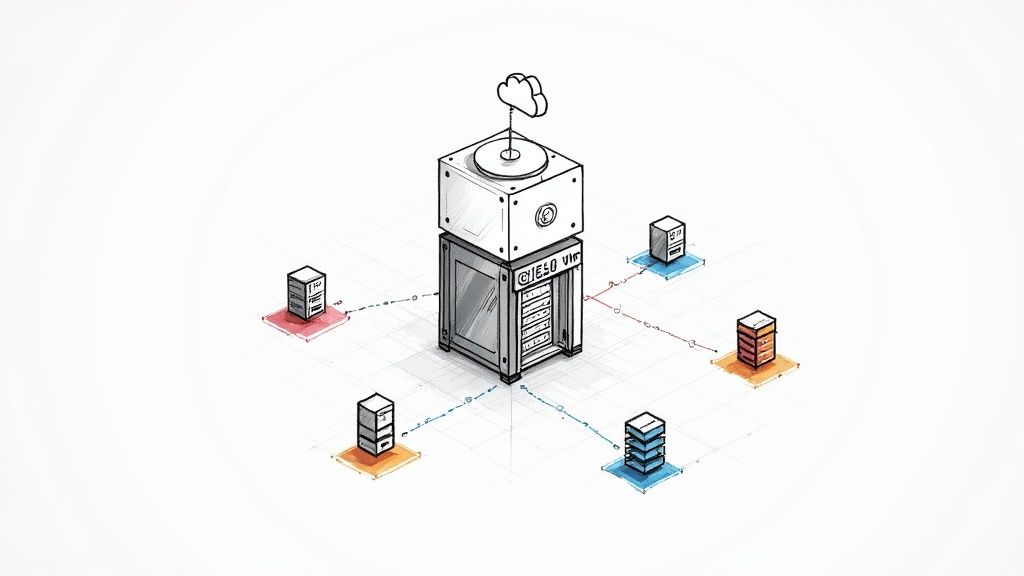
You've done it. The models are clean, the views are crisp, and the templates are sharp. Your Django app runs beautifully on localhost:8000. Now comes the moment of truth, the question that sends a little shiver down every developer's spine: deployment. Where is this thing going to live?
I've been there, staring at a dozen browser tabs, trying to decipher the differences between a PaaS, a VPS, and a serverless platform. It can feel like you're trying to pick a new car by comparing a unicycle, a sedan, and a freight train. They all have wheels, but they solve very different problems. The wrong choice can lead to late nights, unexpected bills, and a lot of frustration.
This guide is the map I wish I had back then. We are going to walk through the landscape of modern Django web hosts, not just with a list of features, but with a real look at the trade offs, the developer experience, and the moments where you will say "aha, this is the one for me". Making the initial choice between different deployment models can be tricky; understanding the nuances of cloud versus on premise infrastructure is a great starting point for that foundational decision.
Let us pause and reflect before we dive in. The goal isn't just to get your site online; it's to find a home for your project that supports its growth without becoming a second full time job. Ready? Let's find that perfect home for your Django project.
1. Heroku
Heroku stands as a pioneer in the Platform as a Service (PaaS) space, offering one of the most streamlined deployment experiences for Django developers. Its core philosophy revolves around abstracting away infrastructure management, allowing you to focus purely on your application code. Deploying a Django project often feels as simple as a git push heroku main, a process that many developers find removes significant friction from their workflow, especially in the early stages of a project.
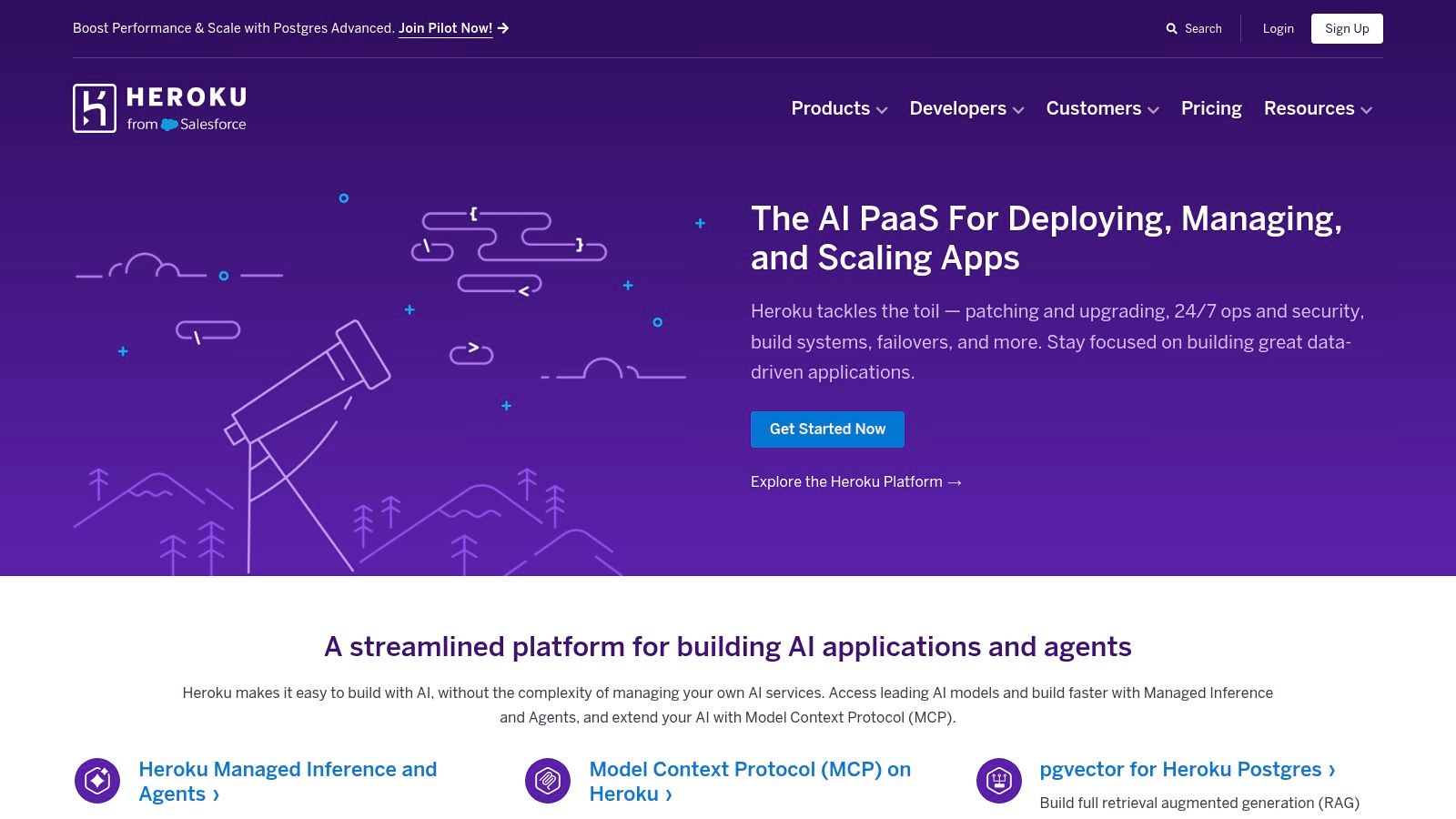
What makes Heroku a top choice among Django web hosts is its Git based workflow and extensive add on marketplace. You manage your application's processes, like the Gunicorn web server, through a simple Procfile. Need a PostgreSQL database, Redis cache, or logging service? You can provision and attach them with single commands, making it incredibly fast to build out a production ready stack. This powerful ecosystem is a key reason Heroku has maintained its popularity. It is also an excellent platform for deploying the backend for your application, for example when you need to learn more about how to make REST APIs in Django.
However, this convenience comes at a price. While its entry level "Eco" and "Basic" dynos are affordable for hobby projects, scaling for production can become more expensive than IaaS alternatives. The Eco tier also "sleeps" after inactivity, making it unsuitable for production applications.
- Best For: Startups, solo developers, and teams prioritizing rapid deployment and a managed environment over granular infrastructure control.
- Key Feature: The vast add on marketplace for databases, caching, and monitoring.
- Limitation: Can be costly at scale; the lowest tier dyno is not suitable for production use due to sleep limitations.
- Website: https://www.heroku.com
2. Render
Render is a modern cloud platform that has gained significant traction as a powerful alternative to traditional PaaS providers. It positions itself as a successor to Heroku, offering a similar developer friendly Git based workflow but with more competitive and transparent pricing. For those looking for excellent Django web hosts, Render provides a seamless deployment experience with native support for both buildpacks and Docker containers, giving developers flexibility in how they package their applications.
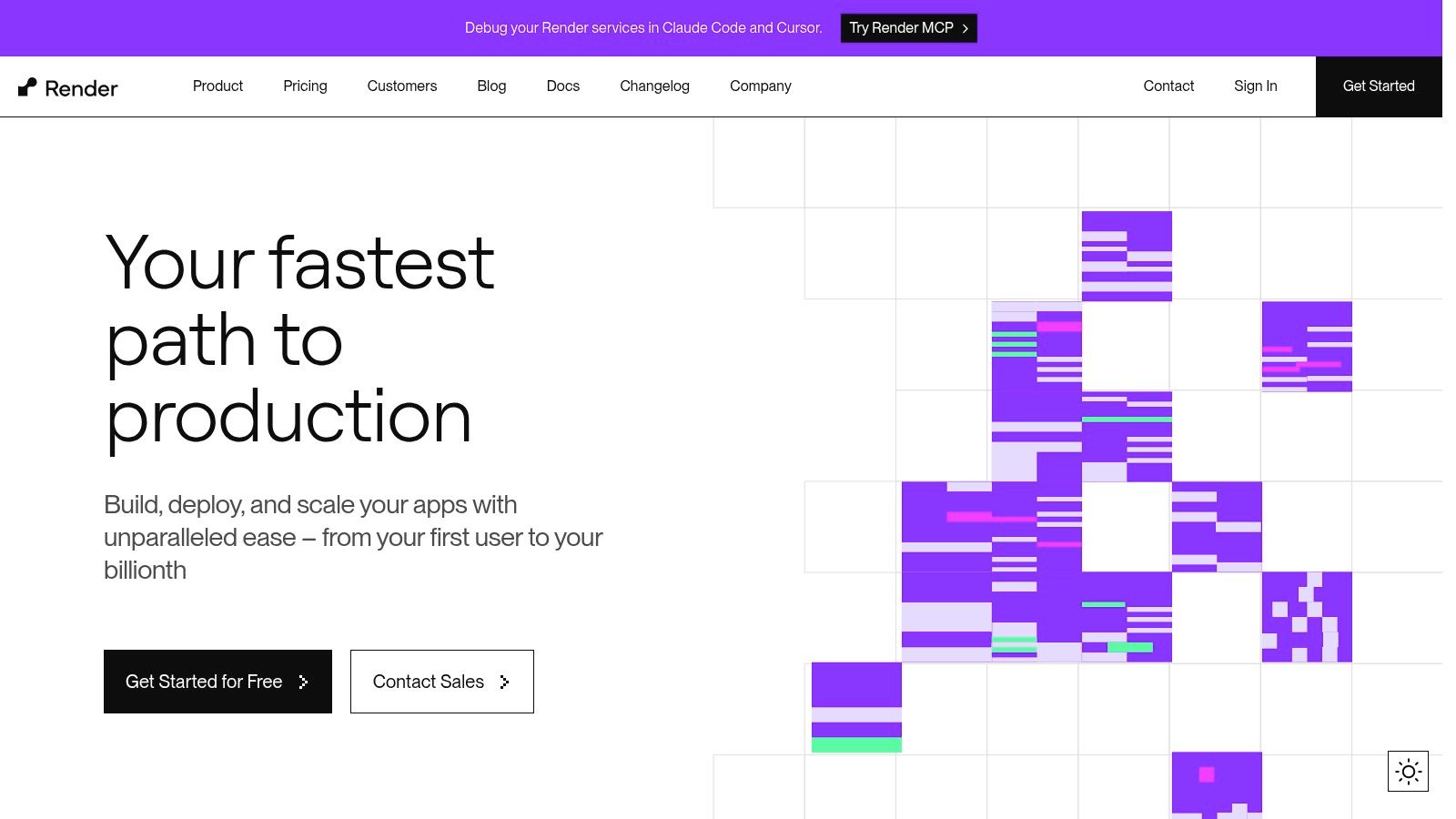
What makes Render compelling is its focus on developer experience without the premium cost associated with scaling. It offers managed PostgreSQL, Redis, automatic TLS certificates, and a global CDN out of the box. Its "preview environments" feature, which automatically deploys a temporary version of your app for every pull request, is a game changer for team collaboration and testing. I remember the first time I saw this in action; it felt like magic and saved us hours of manual QA. The per second billing and generous free tier for web services and databases make it an attractive platform for bootstrapping new projects.
However, the free tier services are designed for hobby projects and will "spin down" after a period of inactivity, causing a delay on the next request. This makes it unsuitable for production applications that require constant uptime, pushing users toward paid plans for any serious deployment.
- Best For: Developers and small teams seeking a modern, cost effective PaaS with a great developer experience and integrated tooling.
- Key Feature: Automatic preview environments for pull requests and built in TLS/CDN.
- Limitation: Free tier services spin down when idle, making them unsuitable for always on production needs.
- Website: https://render.com
3. DigitalOcean App Platform
DigitalOcean App Platform offers a compelling middle ground, blending the simplicity of a PaaS with the power and predictability of its underlying IaaS. For developers familiar with DigitalOcean's ecosystem of Droplets and Managed Databases, App Platform feels like a natural extension. It simplifies deployment by handling the infrastructure, allowing you to connect a Git repository, and let it build and deploy your containerized or buildpack based Django application automatically. This approach provides a clear path from development to production.
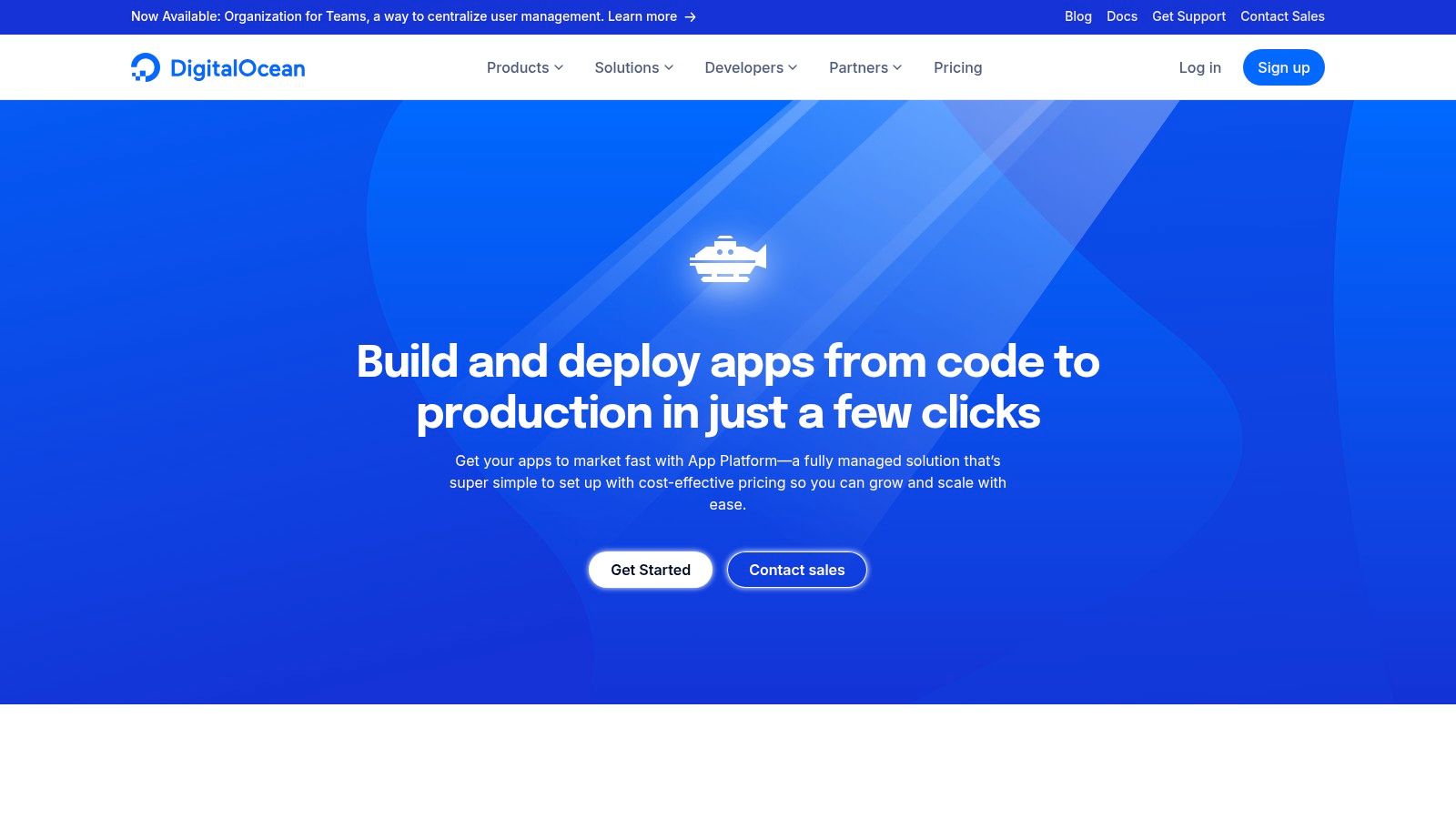
What makes this one of the better django web hosts is its transparent and predictable pricing model. Unlike services that can have surprise costs, App Platform's tiers are straightforward, starting from just $5 per month for a dynamic application. This clarity is a huge benefit for startups and small teams managing tight budgets. It also shines with its ability to manage containerized applications, offering a more modern workflow that many teams are adopting. If you are new to this, you can learn more about its Docker setup guide.
However, its free tier is limited to static sites only, so any Django project will require a paid plan. Also, while a generous amount of outbound data transfer is included, exceeding that allotment will incur additional costs, something to monitor for high traffic applications.
- Best For: Developers and teams already using the DigitalOcean ecosystem who want a simple PaaS layer with predictable, cost effective pricing.
- Key Feature: Seamless integration with DigitalOcean's Managed Databases and Spaces, plus straightforward, container first deployments.
- Limitation: The free tier does not support dynamic applications like Django, and outbound data transfer has overage charges.
- Website: https://www.digitalocean.com/products/app-platform
4. AWS Elastic Beanstalk
For teams already invested in the Amazon Web Services ecosystem, AWS Elastic Beanstalk offers a powerful middle ground. It sits between the raw infrastructure of EC2 and the fully managed simplicity of a PaaS like Heroku. Elastic Beanstalk automates the provisioning of core AWS resources, including EC2 instances, load balancers, and auto scaling groups, letting you deploy your Django application without manually configuring every piece of the underlying infrastructure. It is like having a junior sysadmin who just does what you tell them to.
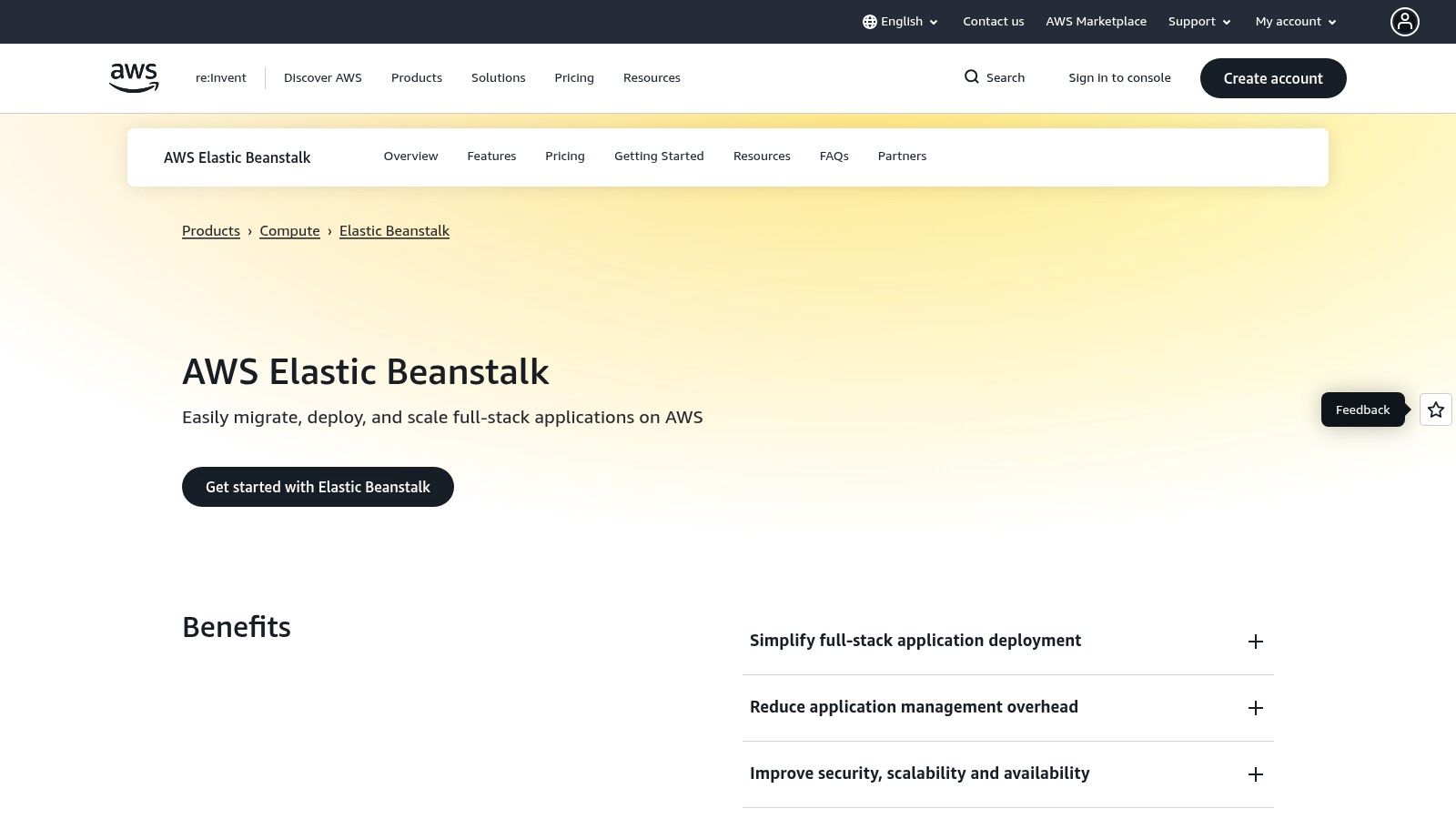
What makes Elastic Beanstalk a compelling Django web host is its seamless integration with the entire AWS suite. You can easily connect your application to RDS for a managed PostgreSQL database, use S3 for static and media file storage, and monitor everything with CloudWatch. Deployment is managed via the EB CLI and configuration files (.ebextensions) in your project, giving you significant control over server setup and software installation. This approach provides much of the power of AWS with a reduced operational burden.
However, the learning curve is steeper than with turnkey platforms. You still need a foundational understanding of AWS concepts like security groups and IAM roles. While Elastic Beanstalk itself is free, you pay for the underlying resources you consume, which can make cost prediction more complex.
- Best For: Teams that need the scalability and power of the AWS ecosystem but want to abstract away some of the infrastructure management complexity.
- Key Feature: Deep integration with AWS services like RDS, S3, and CloudWatch for a complete production environment.
- Limitation: Requires more configuration and AWS knowledge than simpler PaaS options; cost management is less straightforward.
- Website: https://aws.amazon.com/elasticbeanstalk
5. Google Cloud Run
Google Cloud Run brings a serverless, container first approach to the world of Django web hosts. Instead of provisioning and managing servers, you package your Django application into a container image and deploy it. Cloud Run then handles everything else, automatically scaling your application up or down based on incoming traffic, including scaling down to zero when there are no requests. This model is exceptionally efficient for applications with unpredictable or spiky traffic patterns.
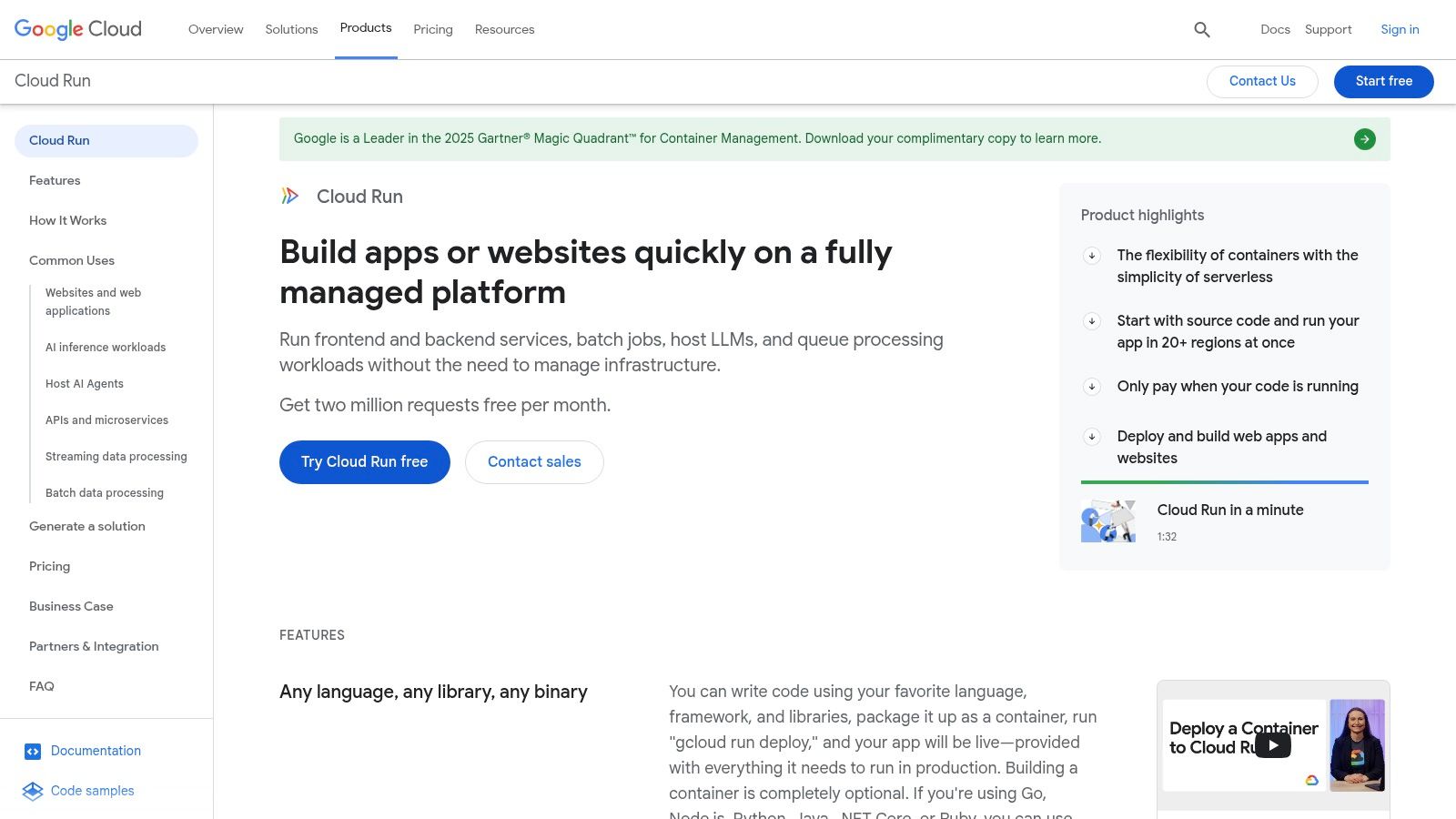
The platform's strength lies in its deep integration with the broader Google Cloud ecosystem and its pay per use pricing model. You can seamlessly connect your Django app to managed services like Cloud SQL for PostgreSQL, Cloud Storage for static files, and Secret Manager for sensitive credentials. The official documentation even includes a detailed tutorial for Django, making the initial setup straightforward. You only pay for the exact CPU and memory your container consumes while processing requests, billed to the nearest 100 milliseconds, which can be highly cost effective.
However, the serverless nature introduces the "cold start" phenomenon. If your service has scaled to zero, the first request will experience a slight delay as a new container instance is started. While this can be mitigated, it is a crucial consideration for latency sensitive applications. Furthermore, predicting costs can be more complex than fixed price hosting, as it depends on request volume, duration, and resource allocation.
- Best For: Applications with variable or spiky traffic, microservices, and developers comfortable with a container based workflow who want to minimize idle costs.
- Key Feature: Pay per use, scale to zero serverless execution that automatically handles traffic spikes.
- Limitation: Potential for cold start latency on the first request; cost modeling can be more nuanced than traditional hosting.
- Website: https://cloud.google.com/run
6. Microsoft Azure App Service (Linux)
For organizations deeply integrated into the Microsoft ecosystem, Azure App Service for Linux presents a compelling and powerful option for deploying Django applications. It operates as a fully managed Platform as a Service (PaaS), designed to handle the underlying infrastructure so your team can focus on development. Azure brings enterprise grade features like global availability, robust security, and seamless CI/CD pipelines through Azure DevOps or GitHub Actions, making it one of the more comprehensive Django web hosts for corporate environments.
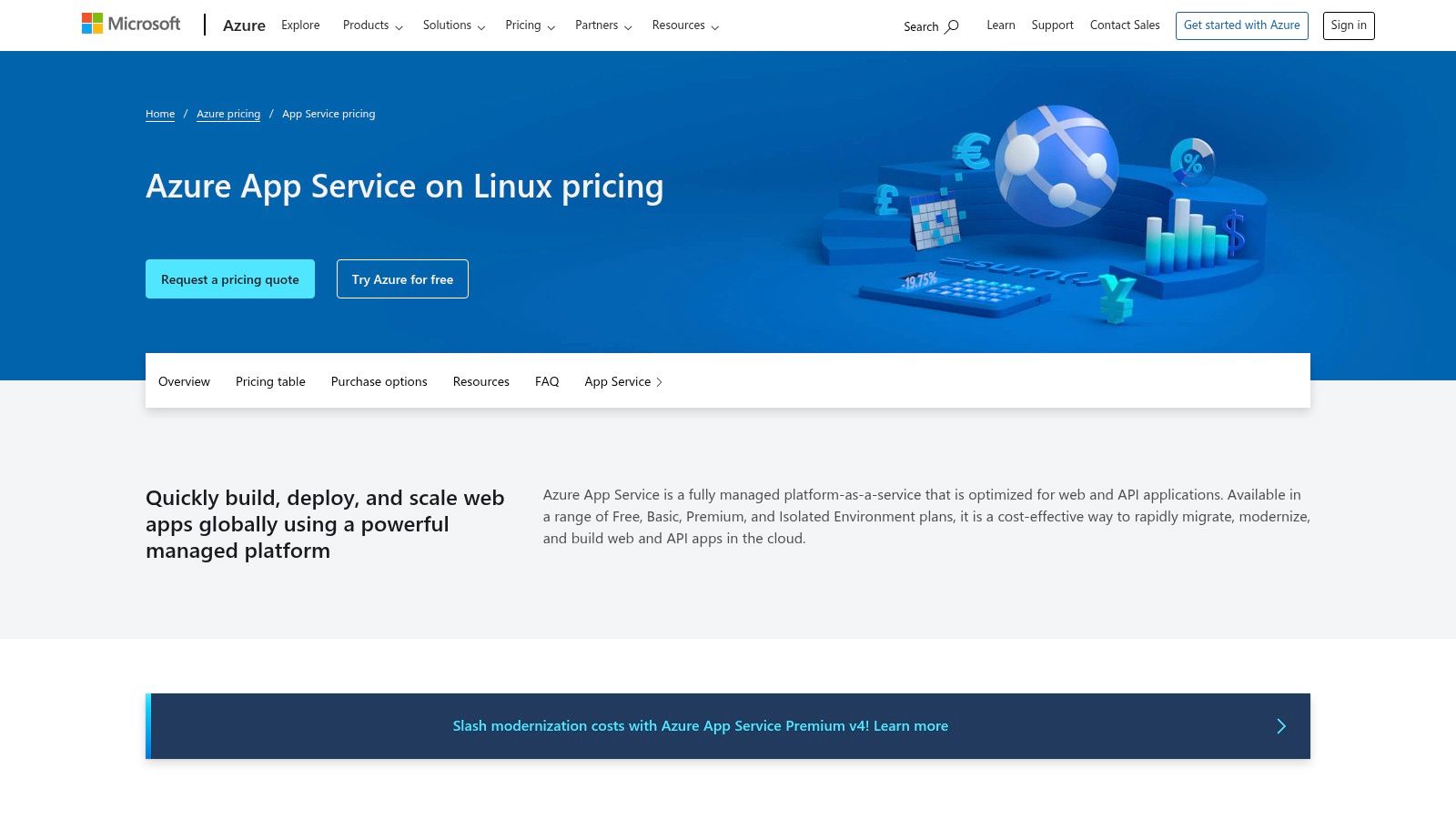
What sets Azure apart is its native integration with the broader Azure cloud. Connecting your Django application to Azure Database for PostgreSQL, Azure Blob Storage for media files, or Azure Monitor for performance insights is a streamlined process. The platform also offers strong support for containerized applications, allowing you to deploy your Django project using Docker for maximum portability and consistency between development and production environments. Deployment is typically handled via the Azure CLI or through automated CI/CD workflows.
While Azure offers a free tier for development and testing, it is not suitable for production workloads due to its limitations. As you scale into its Basic, Premium, or Isolated tiers, the platform provides advanced capabilities like autoscaling, custom domains, and SSL certificates. However, the complexity and pricing structure can be a steeper learning curve compared to more developer focused platforms.
- Best For: Enterprises and teams already invested in the Microsoft Azure ecosystem who require robust security, global scale, and deep service integrations.
- Key Feature: Seamless integration with the entire suite of Azure services, including databases, storage, and monitoring tools.
- Limitation: The platform's complexity and pricing can be overwhelming for smaller teams or individual developers; the free tier is not production ready.
- Website: https://azure.microsoft.com/en-us/pricing/details/app-service/linux
7. PythonAnywhere
PythonAnywhere is a unique Platform as a Service (PaaS) built from the ground up specifically for Python developers. Its standout feature is an incredibly low friction onboarding process that gets a Django application live in minutes, often directly from the browser. This makes it an exceptional choice for learners, educators, and developers looking to deploy prototypes or small scale projects without touching server administration. Everything from the file editor to the Bash console is accessible within your web browser.
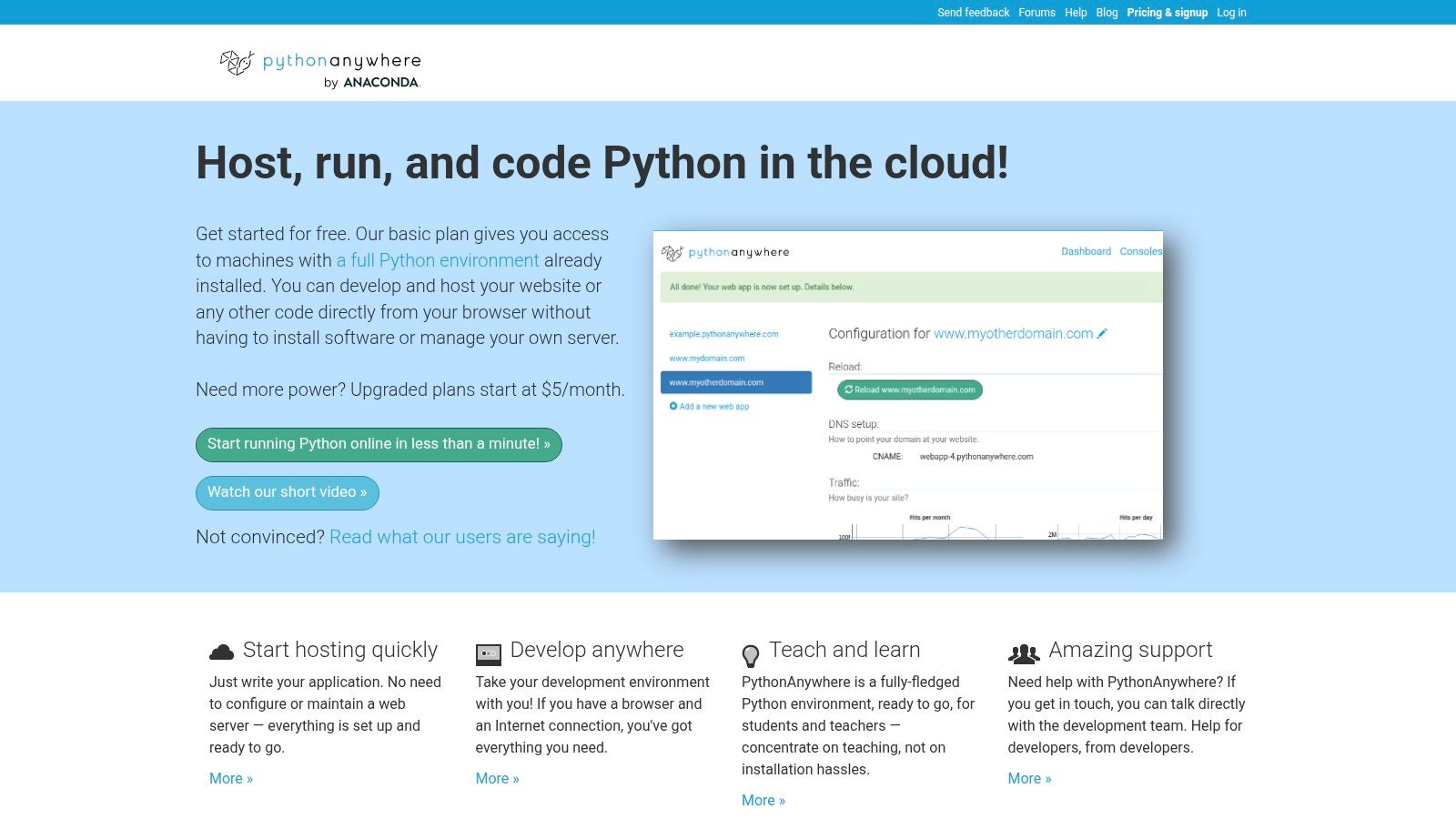
The platform shines with its one click Django setup and helpful WSGI configuration wizards, abstracting away the complexities that often trip up newcomers. I once spent half a day fighting with a WSGI config on a VPS, only to get it working on PythonAnywhere in five minutes. It provides scheduled tasks for cron jobs and "always on" tasks for running background workers, all managed through a simple UI. The generous free tier is perfect for getting your feet wet, making it one of the most accessible django web hosts for those just starting a Django project without the headaches. While it excels at simplicity, its resource limitations and shared infrastructure mean it may not be suitable for high traffic production applications that demand stringent uptime guarantees.
- Best For: Students, hobbyists, and developers deploying prototypes or small to medium sized applications where speed and simplicity are paramount.
- Key Feature: The browser based development environment, including an in browser IDE and full Bash console access.
- Limitation: Resource caps on lower tiers can be restrictive, and it may not offer the reliability needed for high availability, mission critical systems.
- Website: https://www.pythonanywhere.com
8. Linode
Linode offers a powerful middle ground between the hands off convenience of PaaS and the complete control of building from scratch. As a veteran Infrastructure as a Service (IaaS) provider, it gives developers full root access to virtual private servers (VPS), allowing for deep customization of the hosting environment. This level of control is ideal for teams who need to fine tune their stack, manage specific OS level dependencies, or simply want more performance for their money compared to managed platforms.
What makes Linode a compelling choice among Django web hosts is its Marketplace. You can deploy a pre configured Django stack, complete with Nginx or OpenLiteSpeed, in a single click. This drastically reduces the initial server setup time, which is often the biggest hurdle for developers moving from PaaS to IaaS. While you are still responsible for server maintenance and security, these one click apps provide a fantastic starting point, bundling best practices without locking you into a proprietary system.
However, the freedom of IaaS comes with responsibility. Unlike a PaaS, you manage the operating system, security patches, and software updates yourself. This requires a comfort level with the command line and server administration. While its transparent and predictable pricing is a huge advantage for budget conscious projects, the DIY nature means it is less suited for those who want to avoid infrastructure management entirely.
- Best For: Developers and teams who want cost effective, high performance hosting with full server control and are comfortable with system administration.
- Key Feature: One click Django apps in the Marketplace that streamline initial server setup.
- Limitation: Requires hands on server management, including OS updates and security patching, which can be a steep learning curve.
- Website: https://www.linode.com
9. Fly.io
Fly.io offers a unique proposition among Django web hosts by deploying applications not just to a single region, but globally. It runs your containerized Django app on lightweight virtual machines called "Machines" and places them close to your users using anycast networking. This architecture is designed from the ground up to minimize latency, making it an exceptional choice for applications where response time is a critical feature, such as interactive APIs or global SaaS platforms.
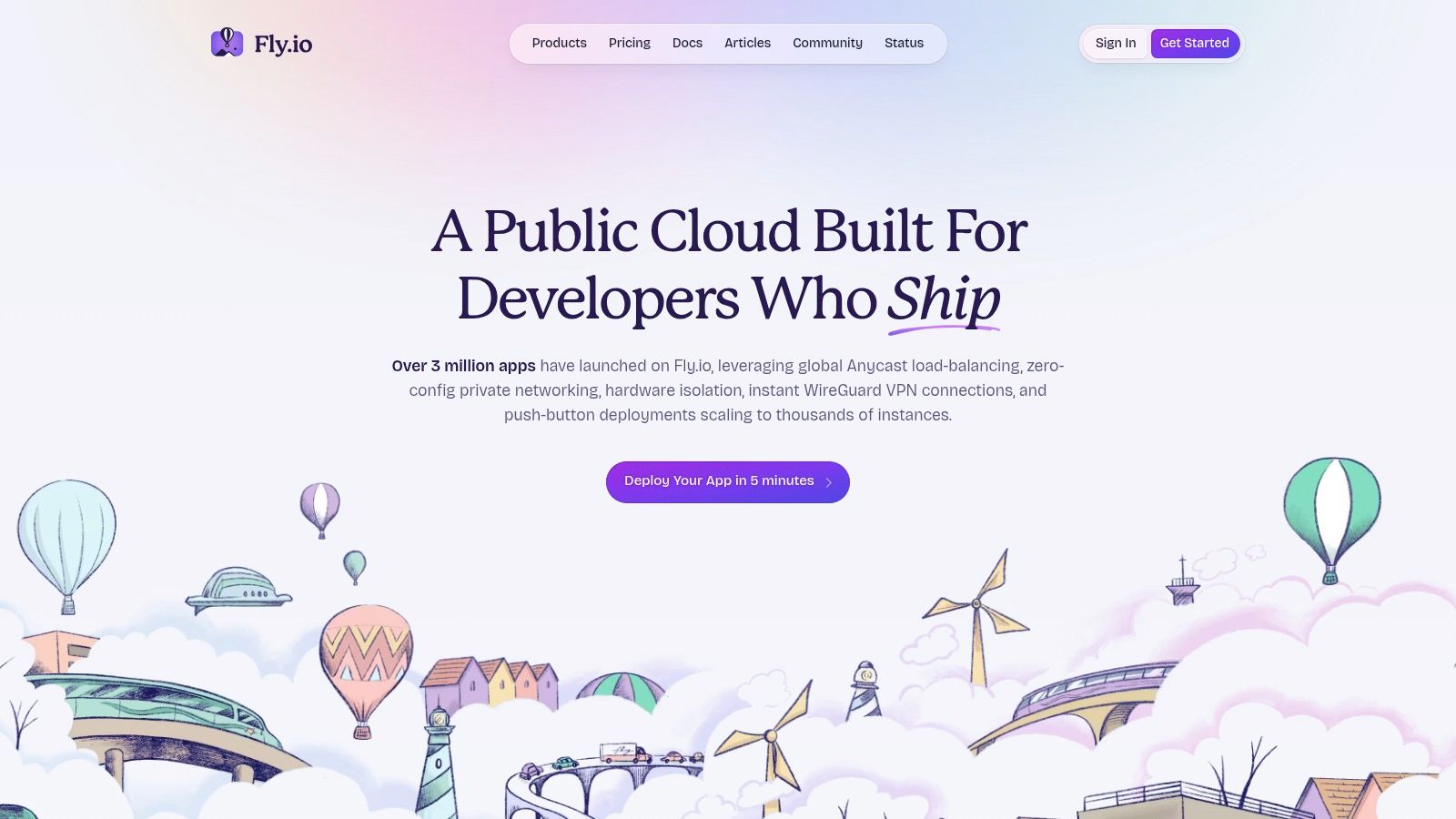
What makes Fly.io stand out is its ability to easily scale an application horizontally across multiple continents. Deploying a multi region Django application, complete with read replica PostgreSQL databases in each region, is a core part of its workflow. This dramatically improves user experience for a worldwide audience. The pricing model is also developer friendly, with per second billing for compute and storage, ensuring you only pay for the resources you actively use.
However, this powerful global infrastructure introduces more complexity than a traditional Platform as a Service. Developers need to be comfortable with concepts like networking, persistent storage volumes, and the nuances of multi region architecture. The learning curve can be steeper for teams accustomed to the simpler push to deploy workflows of services like Heroku.
- Best For: Global applications, low latency APIs, and developers who need fine grained control over a distributed infrastructure.
- Key Feature: Globally distributed application hosting with managed Postgres read replicas for low latency performance.
- Limitation: Steeper learning curve around networking and multi region architecture compared to simpler PaaS providers.
- Website: https://fly.io
10. Platform.sh
Platform.sh is an advanced Platform as a Service (PaaS) engineered for teams managing complex applications and workflows. Its Git based deployment model is supercharged with the ability to create instant, fully functional preview environments for every branch. This allows development teams to test new features in a production like setting without affecting the main application, streamlining the review and CI/CD process significantly for professional teams.
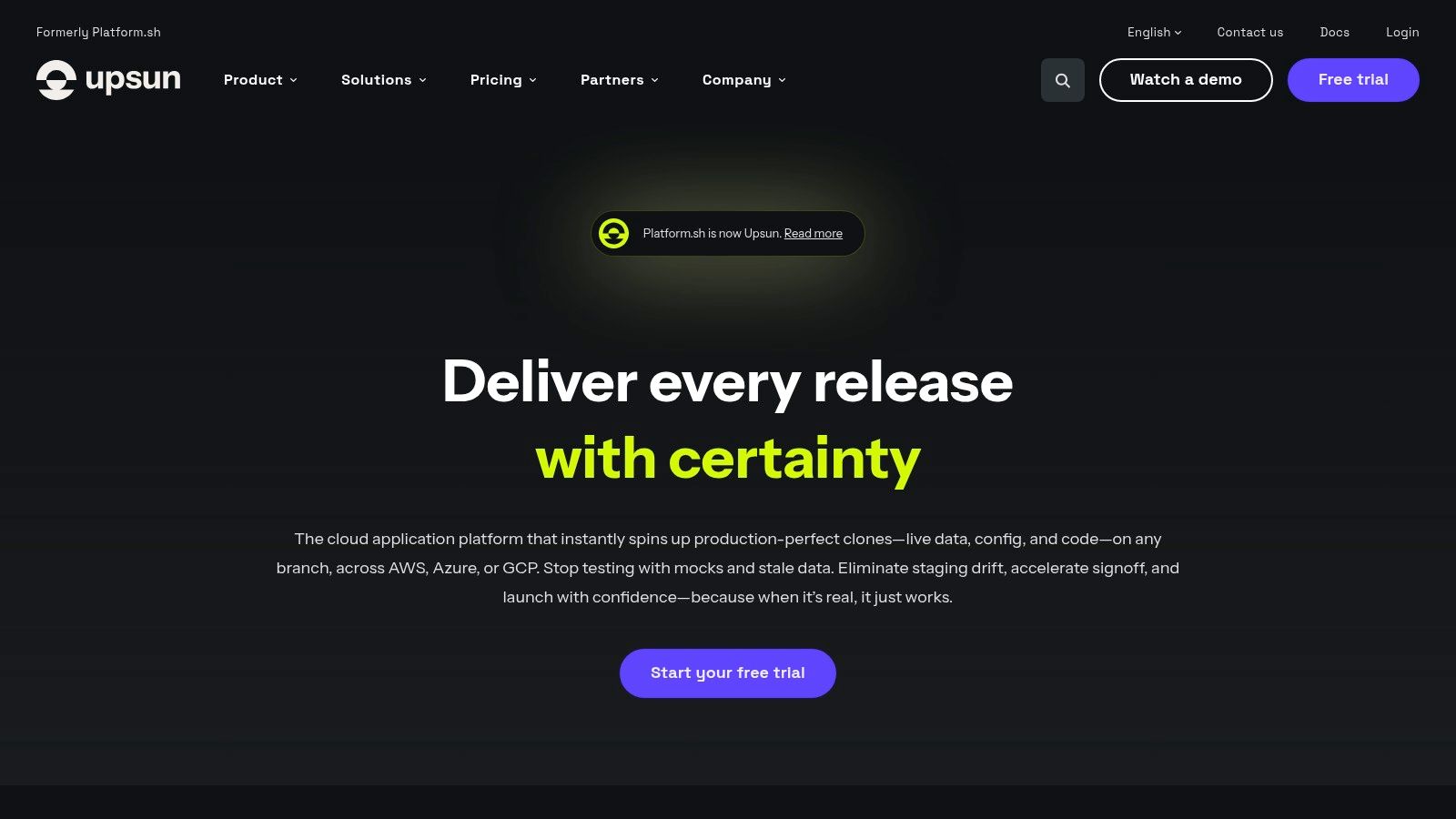
What distinguishes Platform.sh among Django web hosts is its powerful governance and multi application support. It's built for agencies and enterprises that need to manage numerous projects with features like Role Based Access Control (RBAC), SSO, and observability tooling built in. You can define your entire infrastructure, including services like PostgreSQL or Redis, in a single configuration file, making it highly reproducible and easy to manage complex, multi service architectures from one place.
While exceptionally powerful, this enterprise focus means its pricing is higher than hobbyist oriented platforms. The entry level plans are aimed at professional teams rather than solo developers, and pricing is often presented in EUR, reflecting its target market. It's a trade off between cost and a robust, secure, and highly automated development lifecycle.
- Best For: Agencies, enterprises, and teams managing complex or multiple applications that require strong governance and CI/CD automation.
- Key Feature: Instant, clonable preview environments for every Git branch, enabling seamless testing and collaboration.
- Limitation: Pricing is geared towards professional teams and can be higher than other PaaS options; not ideal for small hobby projects.
- Website: https://www.platform.sh
11. Koyeb
Koyeb enters the scene as a modern, serverless platform designed for developers who want the power of global deployment without the infrastructure headaches. Its architecture is built around Git based deploys, Docker containers, and buildpacks, offering a flexible and familiar workflow. For Django developers, this translates into a streamlined process where you can deploy your application and a PostgreSQL database in minutes, with a clear guide to get you started.
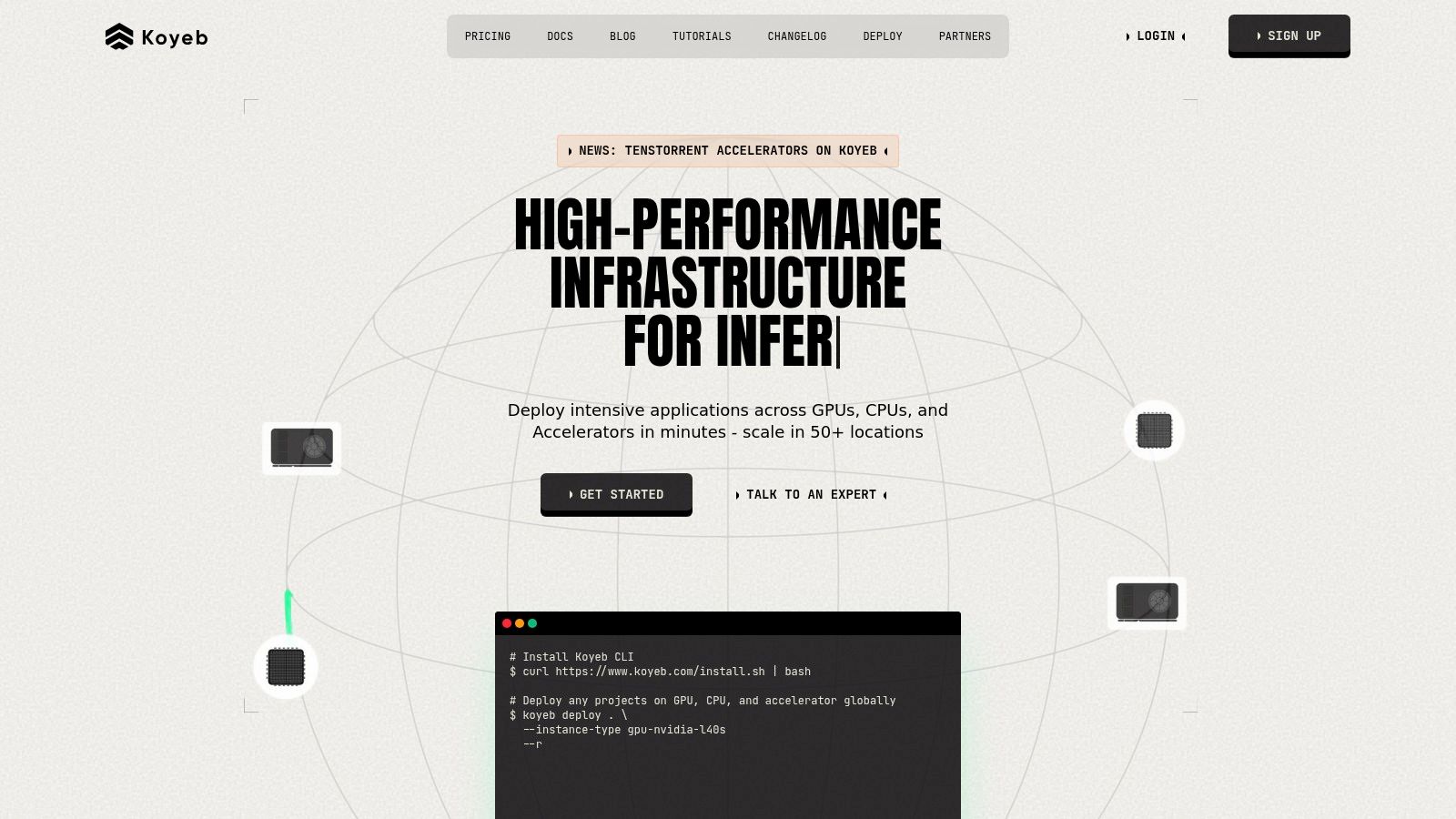
What makes Koyeb one of the more interesting Django web hosts is its powerful free tier and true serverless model. It offers a free web service and a free Postgres instance, making it perfect for launching hobby projects, staging environments, or MVPs without any initial cost. The platform automatically handles autoscaling, including scaling down to zero when there is no traffic, and bills per second for usage beyond the free tier. This pay as you go model provides a cost effective path to scale as your application grows.
However, as a newer player, its ecosystem and marketplace of add ons are not as extensive as those of more established PaaS providers. While its core features are robust, you might need to manually integrate third party services that would be a one click add on elsewhere.
- Best For: Developers and startups looking for a modern, serverless platform with a generous free tier and a simple, cost effective scaling model.
- Key Feature: Autoscaling with scale to zero and per second billing, combined with a free tier that includes both a web service and a database.
- Limitation: The ecosystem of integrated add ons is smaller compared to industry giants, which may require more manual configuration for some services.
- Website: https://www.koyeb.com
12. DreamHost (VPS and DreamCompute)
DreamHost offers a compelling middle ground for developers who have outgrown shared hosting but are not yet ready for the full complexity of a major cloud provider. It provides two distinct paths for Django deployment: managed VPS plans and the more flexible DreamCompute cloud platform. This dual offering makes it an adaptable choice for projects at different stages, whether you need a straightforward, managed environment or full root control over your virtual machine. This makes it a solid option among django web hosts for those who value flexibility.
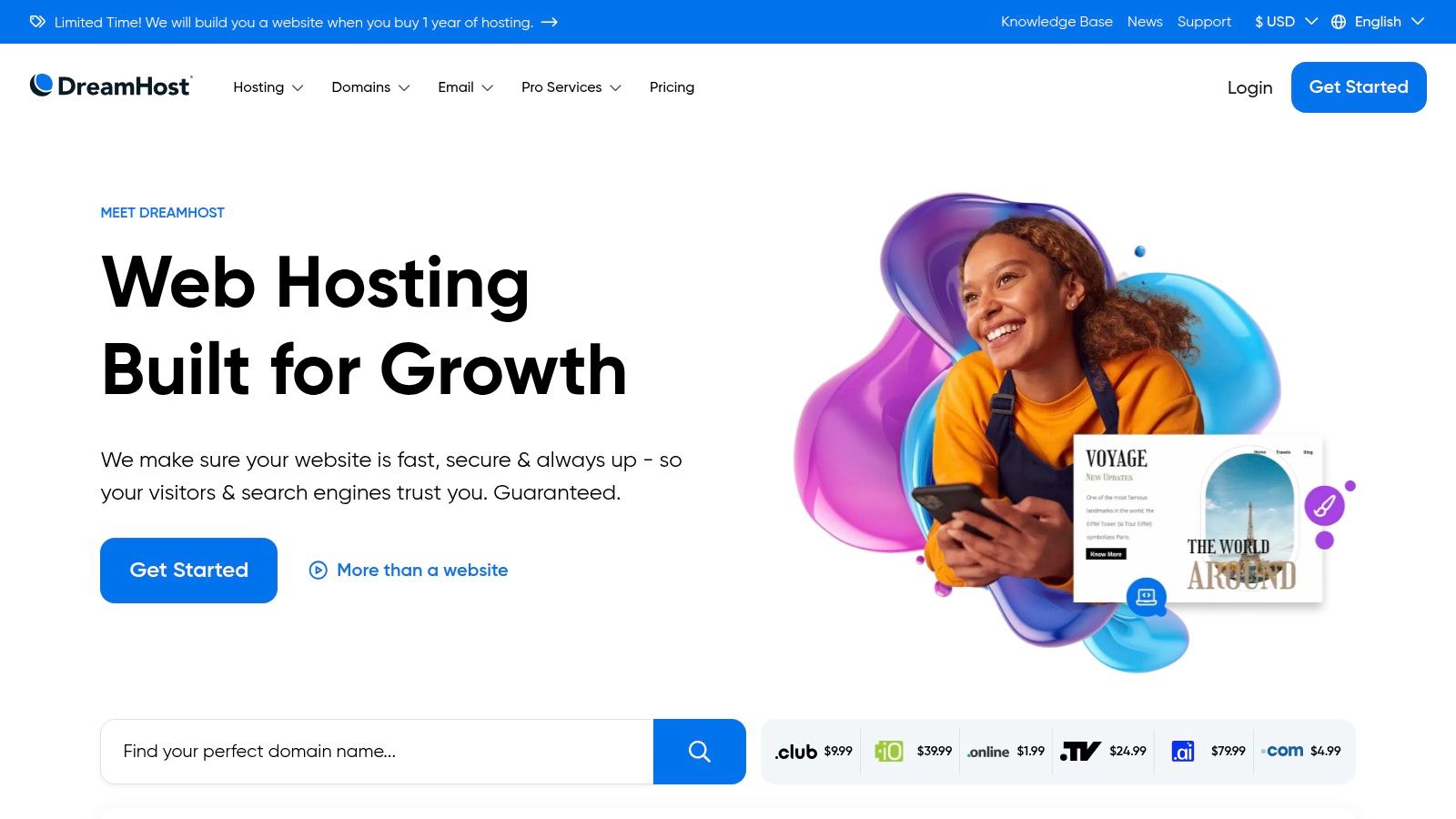
For many, the managed VPS is the sweet spot. It comes with SSH access and clear documentation for setting up a Python environment with virtualenv and running Django with Gunicorn behind a proxy. The inclusion of NVMe storage and unmetered bandwidth at competitive price points provides excellent value. If your needs demand more granular control, DreamCompute, built on OpenStack, gives you a true cloud experience with full root access and hourly billing, allowing for more complex, custom production grade setups.
However, the separation between these services is a key consideration. The standard managed VPS plans do not provide root access, which can be a limitation for certain configurations or software installations. To gain that level of control, you must step up to DreamCompute, which involves a more do it yourself approach to server management.
- Best For: Developers needing affordable and performant VPS hosting with clear Python/Django documentation, or those wanting a scalable OpenStack cloud environment.
- Key Feature: The choice between easy to manage VPS plans and the powerful, unmanaged DreamCompute cloud platform.
- Limitation: Root access is not available on standard managed VPS plans, requiring a move to the more complex DreamCompute for full control.
- Website: https://www.dreamhost.com
12 Django Web Hosts: Side by Side Comparison
| Platform | Core features | Developer experience & quality | Value proposition / USPs | Ideal for (target audience) | Pricing notes / limits |
|---|---|---|---|---|---|
| Heroku | PaaS, Git/Gunicorn/Procfile, large add on marketplace (Postgres, Redis) | Very low friction, strong docs, pipelines & review apps | Fast onboarding; huge ecosystem of integrations | Startups & teams wanting managed deployments | Predictable tiers; higher cost at scale; low cost dynos sleep |
| Render | Buildpacks & Docker, managed Postgres, TLS/CDN, free instances | Developer friendly UI, service previews, rollbacks | Competitive bandwidth/pricing; free hobby tier | Developers needing Heroku like UX with lower cost | Usage based billing; free tiers spin down; card may be required |
| DigitalOcean App Platform | Git deploys, autoscaling, managed DBs, metrics | Simple UI, predictable plans, good docs | Balance of simplicity and control; community support | Cost conscious startups and small teams | Predictable pricing (apps from $5/mo); egress billed separately |
| AWS Elastic Beanstalk | Provisions EC2, ELB, autoscaling; integrates with RDS/S3/CloudWatch | AWS native tooling (EB CLI); more infra knobs to manage | Full AWS power without building infra from scratch | Teams needing deep AWS integration & scale | Pay only for underlying AWS resources; cost varies by config |
| Google Cloud Run | Serverless containers, scale to zero, Cloud SQL/Secret Manager integration | Fast container deploys; per second billing; good docs | Efficient for spiky traffic; pay per use | Apps with variable/spiky traffic patterns | Per second/request billing; potential cold starts; nuanced cost model |
| Azure App Service (Linux) | Managed Linux hosting, CI/CD, Docker support, autoscale | Enterprise features, global regions, Azure integration | Smooth enterprise/service integration, multiple tiers | Organizations already on Azure or needing enterprise SLAs | Multiple tiers (Free→Isolated); free not for production |
| PythonAnywhere | Python first PaaS, one click Django, browser IDE & consoles | Extremely quick onboarding; browser based dev tools | Easiest way to get Django live for learning/prototypes | Learners, prototypes, small/medium apps | Free/beginner tiers with resource caps; limited SLA for prod |
| Linode | VPS compute, full root access, Django marketplace images | More DIY (server admin), extensive guides & marketplace | Strong price/performance and clear control | Teams comfortable managing servers or needing control | Transparent VPS pricing; responsible for OS maintenance |
| Fly.io | Globally distributed VMs ("Machines"), anycast networking, managed Postgres | Low latency multi region deploys; per second billing; steeper networking | Excellent for low latency, geo distributed APIs | Multi region apps requiring low latency | Pay as you go; networking/volumes complexity can increase cost |
| Platform.sh | Git based multi env PaaS, preview environments, RBAC/SSO, CI/CD | Powerful GitOps workflows; strong observability & governance | Best in class preview envs and enterprise compliance | Agencies & enterprises needing governance & multi app support | Higher pricing aimed at professional teams; EUR pricing common |
| Koyeb | Serverless autoscaling VMs, scale to zero, free web service + Postgres | Modern developer UX; Docker/buildpack support; Django guide | Free starter tier; pay as you go serverless model | Small projects, modern serverless Django apps | Free starter; some regions/features require card; smaller ecosystem |
| DreamHost (VPS / DreamCompute) | Managed VPS, OpenStack DreamCompute, SSH, Gunicorn guides | VPS/VM control or managed options; clear Python docs | Flexible VPS/cloud VM value; hourly DreamCompute billing | Cost sensitive teams wanting VPS or OpenStack VMs | Competitive VPS pricing; DreamCompute hourly caps & free bandwidth options |
Making the Final Call on Your Host
We've journeyed through a landscape of powerful and diverse django web hosts, from the streamlined developer experience of Platform as a Service (PaaS) to the raw power of Infrastructure as a Service (IaaS). The path from localhost to a live, production grade application is a significant milestone, and selecting the right hosting partner is a critical decision that echoes through your project's entire lifecycle. It's a choice that impacts your development speed, operational overhead, and ultimately, your ability to scale.
The central lesson here is that there is no single "best" host. The ideal choice is a reflection of your specific circumstances. Are you a solo founder launching a minimum viable product? A PaaS like Heroku or Render will get you to market fastest, abstracting away the complexities of infrastructure management. Does your team have deep DevOps expertise and a need for absolute control over the environment? A virtual private server from Linode provides that granular power. Or perhaps you're building an application with unpredictable, spiky traffic patterns? A serverless solution like Google Cloud Run offers incredible elasticity and cost efficiency.
Key Takeaways for Your Decision
Making the right call involves a thoughtful assessment of your project's current state and future ambitions. Before you commit, pause and reflect on these crucial factors:
- Developer Experience vs. Control: PaaS solutions like Render, Heroku, and Fly.io prioritize a smooth deployment pipeline. This is a massive advantage for small teams, but it comes at the cost of less control over the underlying infrastructure. If you need to fine tune your Nginx configuration or install specific system level dependencies, a VPS might be a better long term choice.
- Scalability Pathway: Consider how your chosen host will grow with you. A platform like PythonAnywhere is brilliant for beginners and small projects, but might not be the best fit for a high traffic application. Conversely, starting on a complex AWS setup might be overkill for a simple portfolio site. Look for a host that offers a clear and manageable path to scale your resources as your user base grows.
- True Cost of Ownership: The sticker price is just one part of the equation. A cheap VPS might seem attractive, but you must factor in the time and expertise required for server setup, security patching, and ongoing maintenance. Sometimes, paying more for a managed service saves you money and headaches in the long run by freeing up your engineering team to focus on building features, not managing servers.
Choosing from the top django web hosts is a strategic decision, not just a technical one. It's about aligning your infrastructure with your business goals, team skills, and product roadmap. The right platform will feel like a silent partner, empowering you to build and iterate quickly, while the wrong one can become a constant source of friction. Use this guide as a map, consider your unique destination, and choose the path that best supports your journey.
Navigating the complexities of architecture, from choosing the right django web hosts to designing a scalable backend, is what I do. If you're an early stage founder or a CTO looking for a technical partner to help you make these critical decisions with confidence, connect with me at Kuldeep Pisda. Let's build something robust and ready for the future, together.
Become a subscriber receive the latest updates in your inbox.



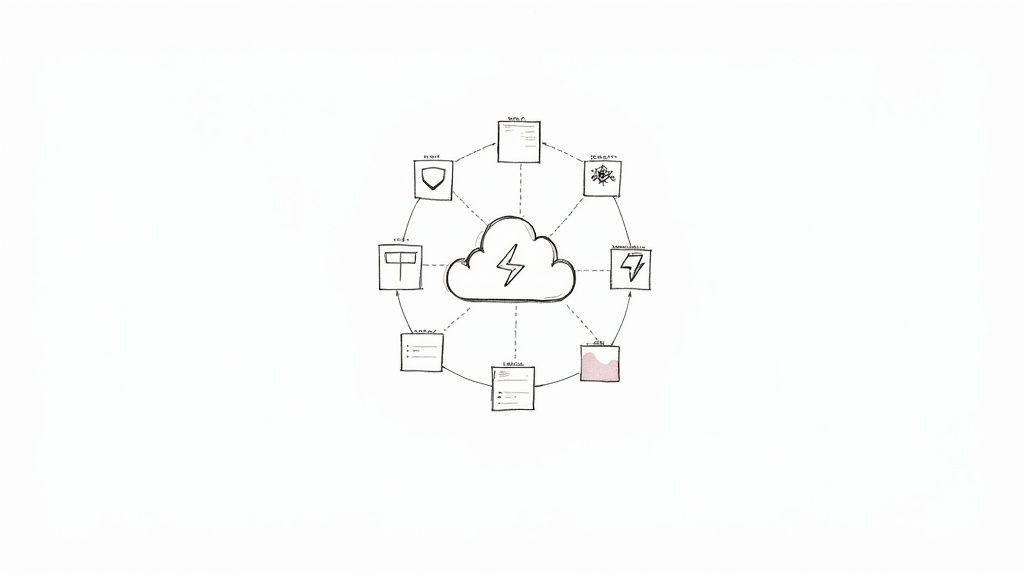
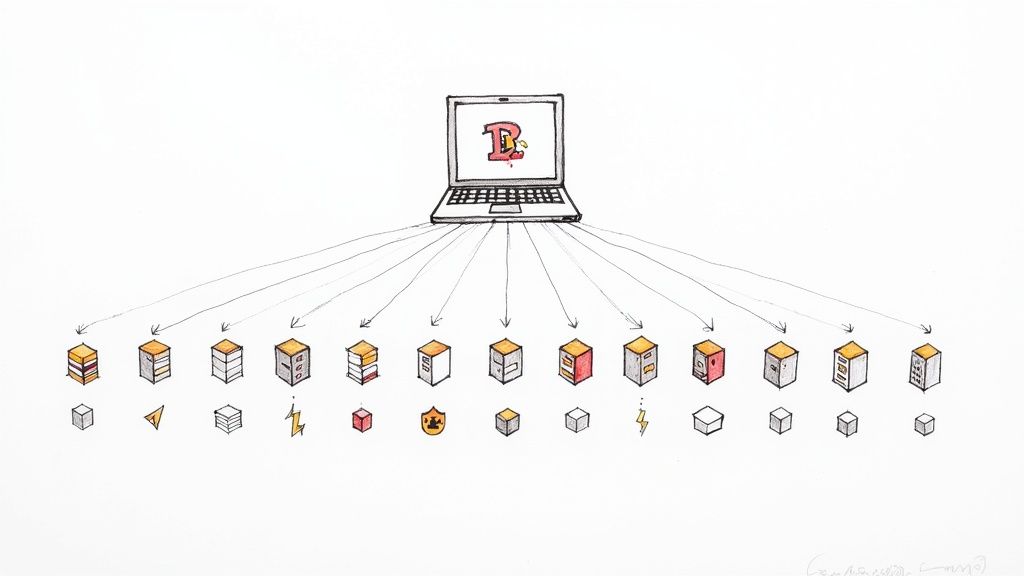

Member discussion